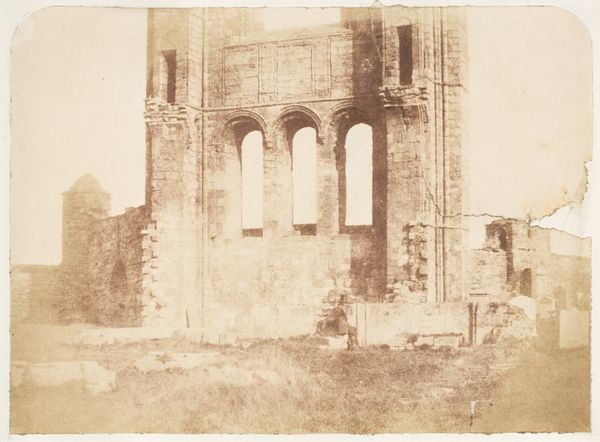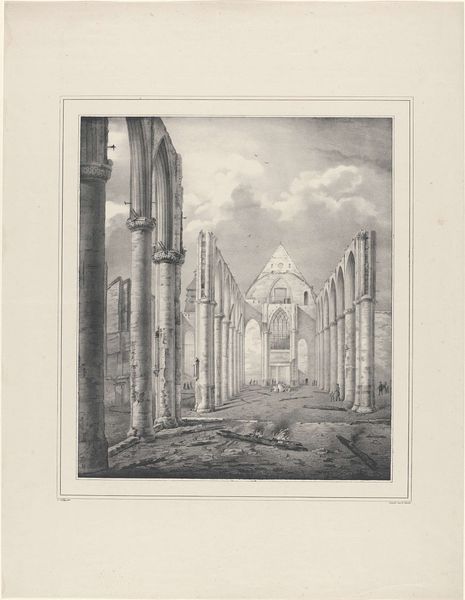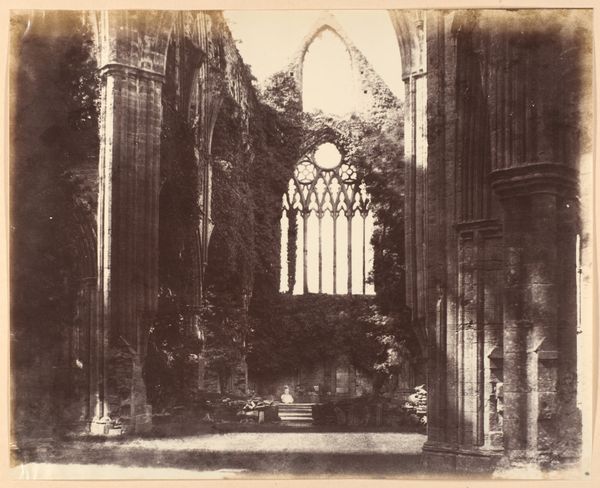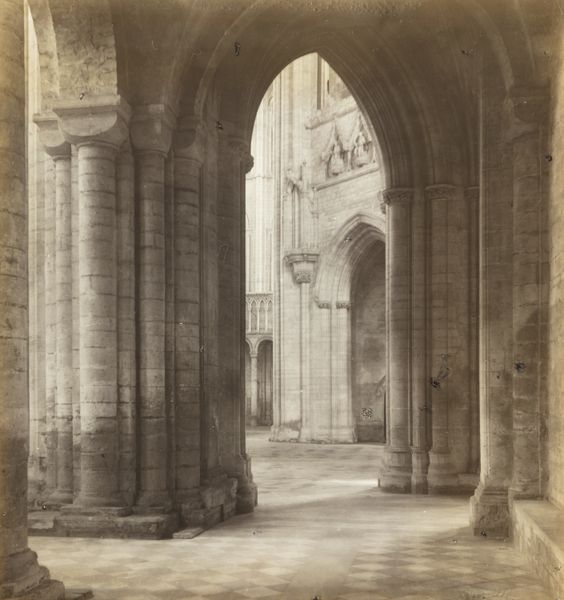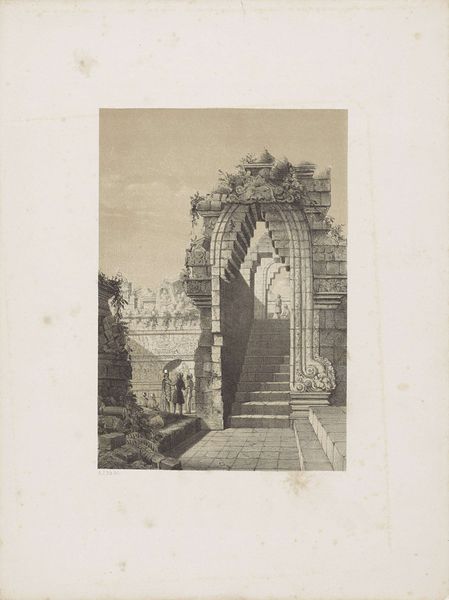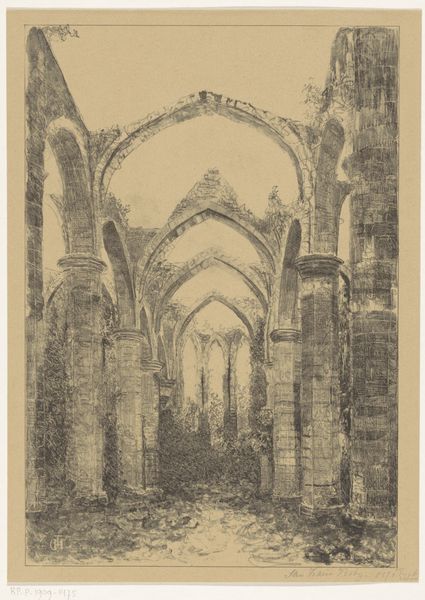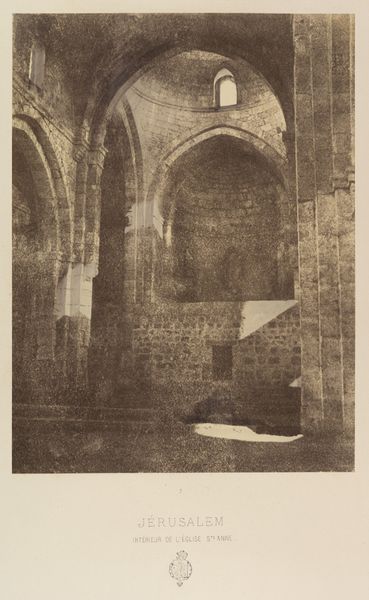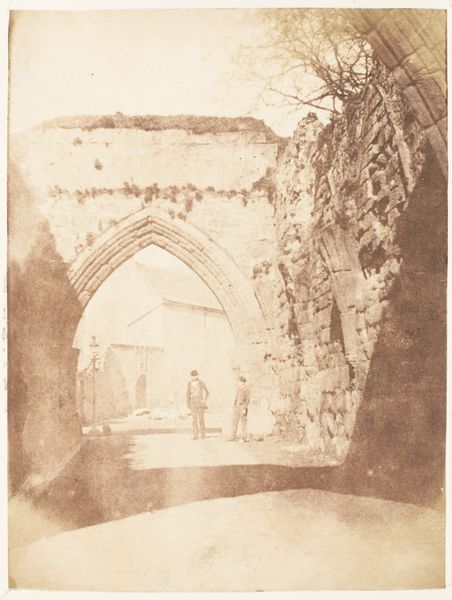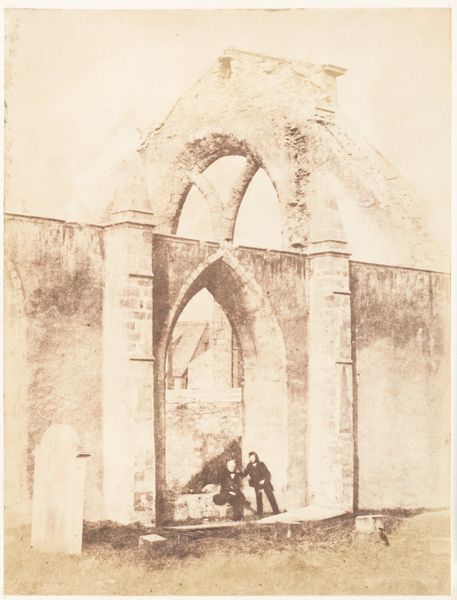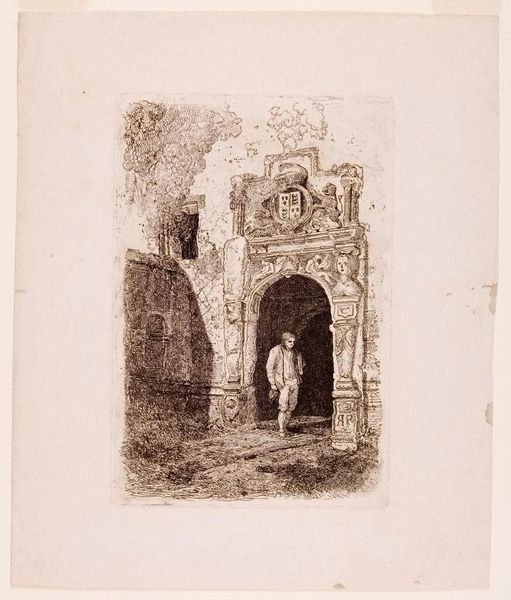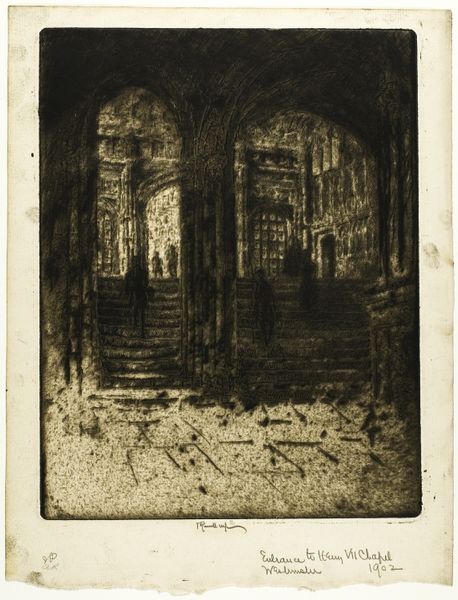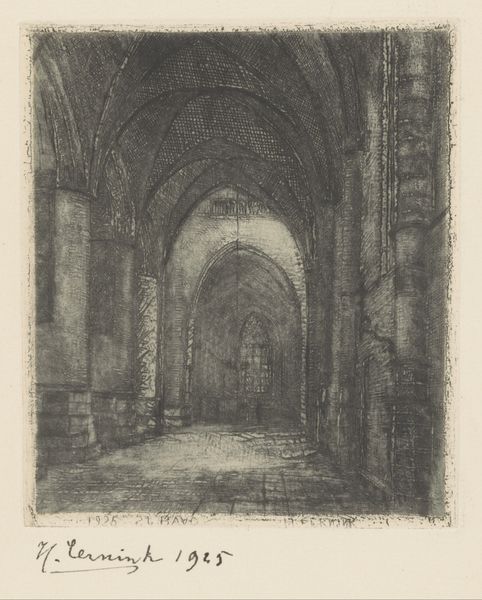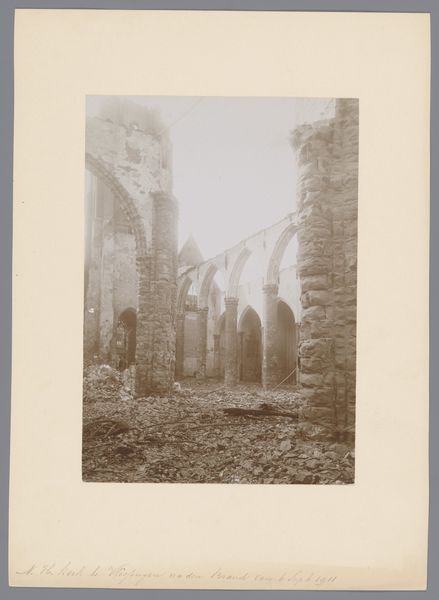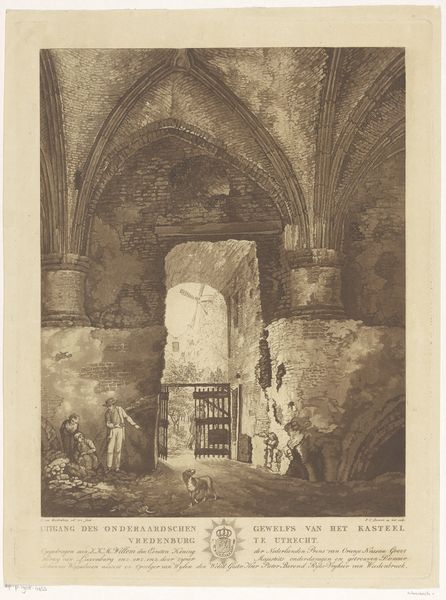
photography, gelatin-silver-print
#
medieval
#
landscape
#
photography
#
romanesque
#
gelatin-silver-print
Dimensions: height 84 mm, width 82 mm, height 100 mm, width 93 mm
Copyright: Rijks Museum: Open Domain
This photograph of the Furness Abbey was taken by Roger Fenton using the collodion process, a painstaking procedure involving coating a glass plate with chemicals, exposing it in the camera while still wet, and then developing it immediately. The tonal range is soft, almost velvety, thanks to the light-sensitive silver particles suspended in the collodion emulsion. What appears to be a straightforward record of architecture becomes something more complex when you consider this process. Think about Fenton in his darkroom tent, carefully preparing each plate. The amount of physical labor and technical skill is remarkable; it’s as much a feat of craft as it is a work of art. Photography in the 19th century wasn't about merely pointing and shooting. It demanded an engagement with chemistry, light, and time. This highlights how even seemingly straightforward images are deeply embedded in the materiality of their making.
Comments
No comments
Be the first to comment and join the conversation on the ultimate creative platform.
